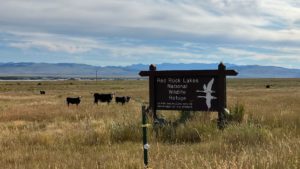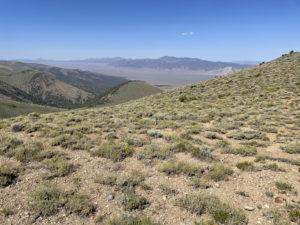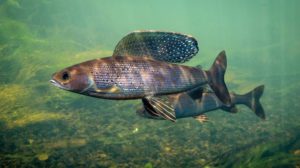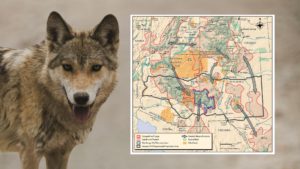For Immediate Release September 6, 2024
Contact:
Kevin Emmerich, Basin and Range Watch, atomicquailranch@gmail.com, 775-764-1080
Laura Cunningham, Western Watersheds Project, lcunningham@westernwatersheds.org, 775-513-1280
LAS VEGAS – Today, the Bureau of Land Management released the Draft Environmental Impact Statementfor the Bonanza Solar Project, a 2,413-acre photovoltaic project on public lands that would be built in what experts have determined to be the most crucial Mojave desert tortoise connectivity corridor in Southern Nevada, according to a study by the U.S. Geological Survey. Over three square miles of tortoise habitat would be destroyed, and the power would be exported to the Southern California Public Power Authority in Pasadena, California. Nevada would see no long-term benefits of the proposed project, only ecosystem sacrifice.
“The Bureau’s focused attempt to build as much solar as possible on public lands in Nevada will contribute to the ongoing decline and potential extinction of the Mojave desert tortoise,” said Kevin Emmerich, Co-founder of Basin and Range Watch. “At this point, there are three other solar applications in the area totaling an additional 16,000 acres of potential habitat destruction.”
Individual tortoises are affected by interruptions in landscape connectivity, which prevents breeding and other social interactions resulting in a loss of genetic and demographic connectivity among individuals and populations. In the Las Vegas Valley, tortoise connectivity simply no longer exists due to the dense urbanization. But the remaining open space from the Indian Springs Valley, west through the Mercury, Amargosa and eventually Pahrump Valleys is a habitat connectivity corridor, which is exactly where the proposed solar project would be located.
During the early planning stages of this project, conservation organizations submitted a proposed alternative to protect this valuable habitat as the Cactus Springs Area of Critical Environmental Concern (ACEC), but the Bureau has rejected the proposal and is determined to convert valuable habitat into industrial solar energy sacrifice zones. The Bureau is required by the National Environmental Policy Act to consider a range of reasonable alternatives and has finalized a Public Lands Conservation rule placing conservation on equal par with other land uses but has ignored the proposal to protect the most important desert tortoise connectivity habitat in Nevada.
“The Bureau is saying that a Conservation Alternative like our Cactus Springs ACEC nomination is not in the scope of review of the proposed solar project, but we strongly disagree,” said Laura Cunningham with Western Watersheds Project. “This Mojave Desert landscape was supposed to be protected from development in order to balance the loss of habitat in southern Nevada. We are putting the new public lands rule to a test, and it appears to be failing already. The agency must do its job and balance development with conservation.”
The desert tortoise was listed as Threatened under the Endangered Species Act in 1990. Under federal law, adult desert tortoises must be removed from the construction site by a crew of authorized desert tortoise biologists, but this does not apply to the juvenile tortoises. It is likely that hundreds of juvenile desert tortoises will be crushed and killed during the construction of this project.
The project area is in the closed Wheeler Wash Allotment, once grazed by cattle, but now part of the Clark County Multiple Species Habitat Conservation Plan that conserves tortoise habitat as mitigation for the growth of Las Vegas. Unfortunately, those mitigation gains will be obliterated by the construction of this project.
“The desert tortoise has experienced major losses in numbers throughout its range including a 39 percent loss from 2004 to 2014,” Emmerich said. “Drought, subsidized predation, urban sprawl and solar energy are some of the major drivers of this decline. Industrial-scale solar energy development has destroyed close to 100,000 acres of habitat for the species – so far”.
—
Basin and Range Watch is a nonprofit working to conserve the deserts of Nevada and California and to educate the public about the diversity of life, culture, and history of the ecosystems and wild lands of the desert.
The mission of Western Watersheds Project is to protect and restore western watersheds and wildlife through education, public policy initiatives, and legal advocacy.






